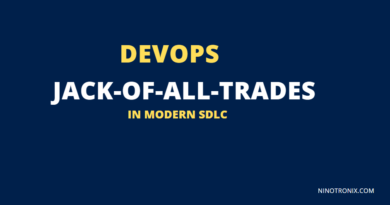All about CloudBolt
Cloudbolt is a hybrid cloud management platform that enables IT teams to deploy and manage virtual machines, applications, and other infrastructure across public, private, and hybrid clouds. With Cloudbolt, users can streamline their cloud operations, improve service delivery, and gain visibility and control over their cloud resources.
Key Features:
- Multi-cloud support: Cloudbolt supports a wide range of public and private clouds, including AWS, Azure, Google Cloud, VMware, OpenStack, and more.
- Self-service IT: Cloudbolt’s self-service portal enables users to request and deploy resources on-demand, without IT involvement.
- Cost optimization: Cloudbolt provides tools for cost analysis and optimization, enabling users to track their cloud spend and identify areas for cost savings.
- Governance and compliance: Cloudbolt provides tools for enforcing governance and compliance policies across clouds, including role-based access controls, usage quotas, and approval workflows.
- Integration: Cloudbolt integrates with a wide range of third-party tools, including monitoring and logging tools, automation tools, and configuration management tools.
Here are some of the benefits of using Cloudbolt:
- Multi-cloud support: With support for a wide range of public and private clouds, Cloudbolt enables organizations to manage their cloud resources from a single platform, regardless of which cloud provider they use.
- Self-service IT: Cloudbolt’s self-service portal enables users to request and deploy resources on-demand, without the need for IT involvement. This improves agility and enables faster service delivery.
- Cost optimization: With tools for cost analysis and optimization, Cloudbolt enables organizations to track their cloud spend and identify areas for cost savings. This helps to minimize cloud costs and maximize ROI.
- Governance and compliance: Cloudbolt provides tools for enforcing governance and compliance policies across clouds, including role-based access controls, usage quotas, and approval workflows. This ensures that cloud resources are used in a secure and compliant manner.
- Integration: Cloudbolt integrates with a wide range of third-party tools, including monitoring and logging tools, automation tools, and configuration management tools. This enables organizations to leverage their existing toolchain and avoid vendor lock-in.
To install Cloudbolt, follow these steps:
- Download the Cloudbolt installer from the Cloudbolt website.
- Install the Cloudbolt dependencies, which include Python and PostgreSQL.
- Run the Cloudbolt installer and follow the prompts to complete the installation.
- Access the Cloudbolt web interface and configure the system settings.
To use Cloudbolt to deploy resources, follow these steps:
- Log in to the Cloudbolt web interface and navigate to the self-service portal.
- Choose the cloud provider you want to use and select the resources you want to deploy.
- Configure the resource settings, such as the virtual machine size and network configuration.
- Submit the request and wait for the deployment to complete.
- Monitor the deployment status and troubleshoot any issues that arise.
Here are some example use cases for Cloudbolt:
- Hybrid cloud management: Cloudbolt enables organizations to manage their hybrid cloud resources from a single platform, simplifying management and reducing costs.
- DevOps automation: Cloudbolt can be used to automate the deployment of development and testing environments, enabling faster software delivery.
- Cost optimization: Cloudbolt’s cost analysis and optimization tools can be used to identify areas for cost savings and minimize cloud spend.
- Compliance and governance: Cloudbolt’s governance and compliance tools can be used to enforce security and compliance policies across clouds, ensuring that cloud resources are used in a secure and compliant manner.
- Application management: Cloudbolt can be used to deploy and manage applications across clouds, providing a unified application management platform.
Cloudbolt Cheat Sheet:
Here are some key commands and concepts to keep in mind when working with Cloudbolt:
- Blueprint: A blueprint is a set of instructions for deploying a particular type of resource, such as a virtual machine or an application. Blueprints can be customized to meet specific needs, and can be saved for future use.
- Cloud provider: A cloud provider is a public or private cloud that is supported by Cloudbolt, such as AWS or Azure.
- Deployment: A deployment is the process of creating and configuring a resource, such as a virtual machine or an application, on a cloud provider.
- Resource: A resource is a virtual machine, application, or other type of infrastructure that can be deployed and managed using Cloudbolt.
- Service: A service is a group of related resources that are deployed together as a unit. Services can be customized to meet specific needs, and can be saved for future use.
- Action: An action is a task that can be performed on a resource or a group of resources, such as starting or stopping a virtual machine.
Here are some example commands for working with Cloudbolt:
- cbcli blueprint list: This command lists all available blueprints.
- cbcli cloud list: This command lists all available cloud providers.
- cbcli deployment create: This command creates a new deployment for a specified blueprint on a specified cloud provider.
- cbcli resource list: This command lists all available resources.
- cbcli service create: This command creates a new service for a group of related resources.
- cbcli action start: This command starts a specified resource or group of resources.
In summary, Cloudbolt is a hybrid cloud management platform that provides a wide range of tools and features for deploying and managing resources across public, private, and hybrid clouds. With Cloudbolt, organizations can improve their cloud operations, reduce costs, and gain greater visibility and control over their cloud resources. By understanding the key concepts and commands involved in working with Cloudbolt, users can streamline their workflows and maximize the benefits of this powerful cloud management tool.




